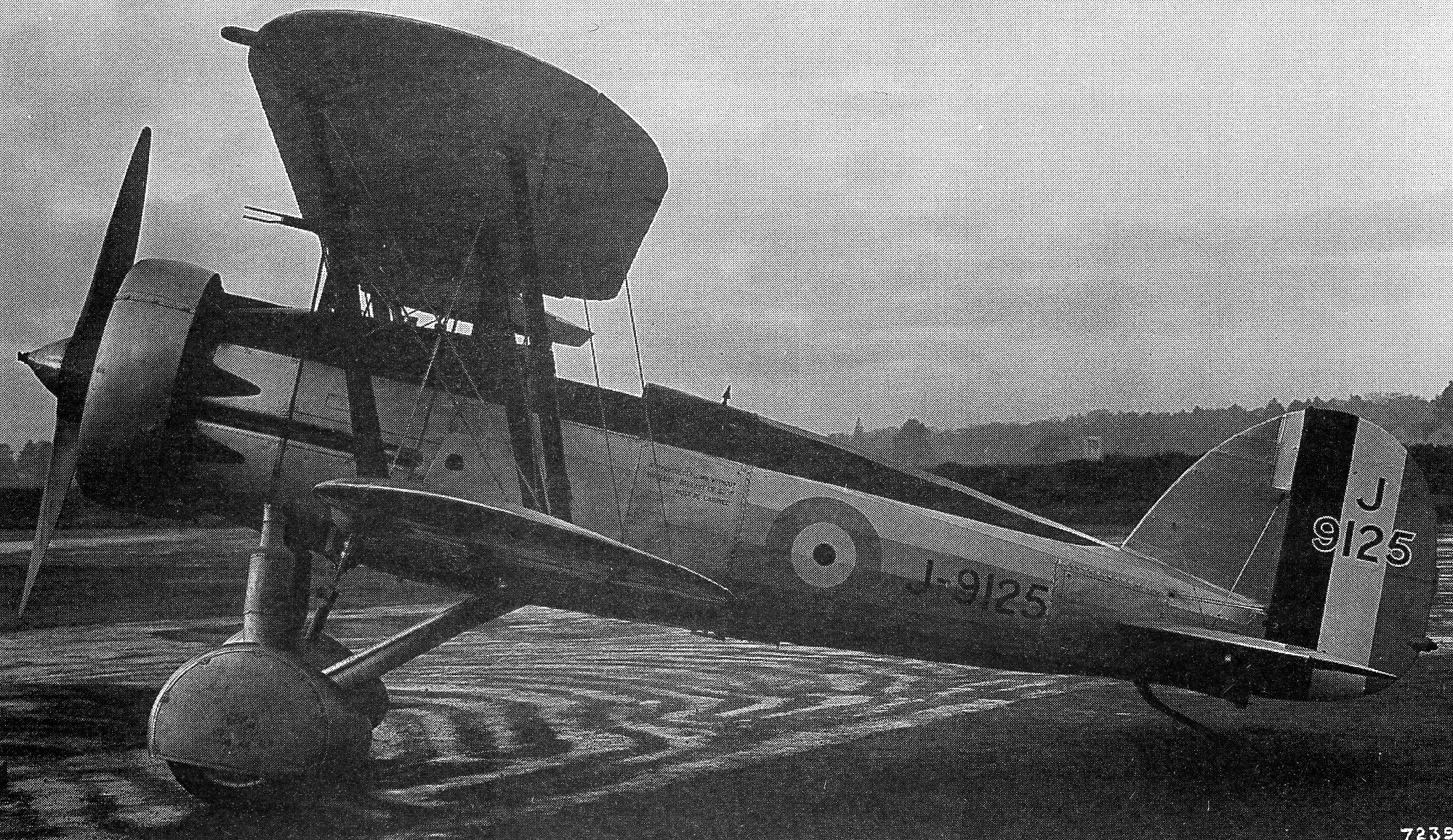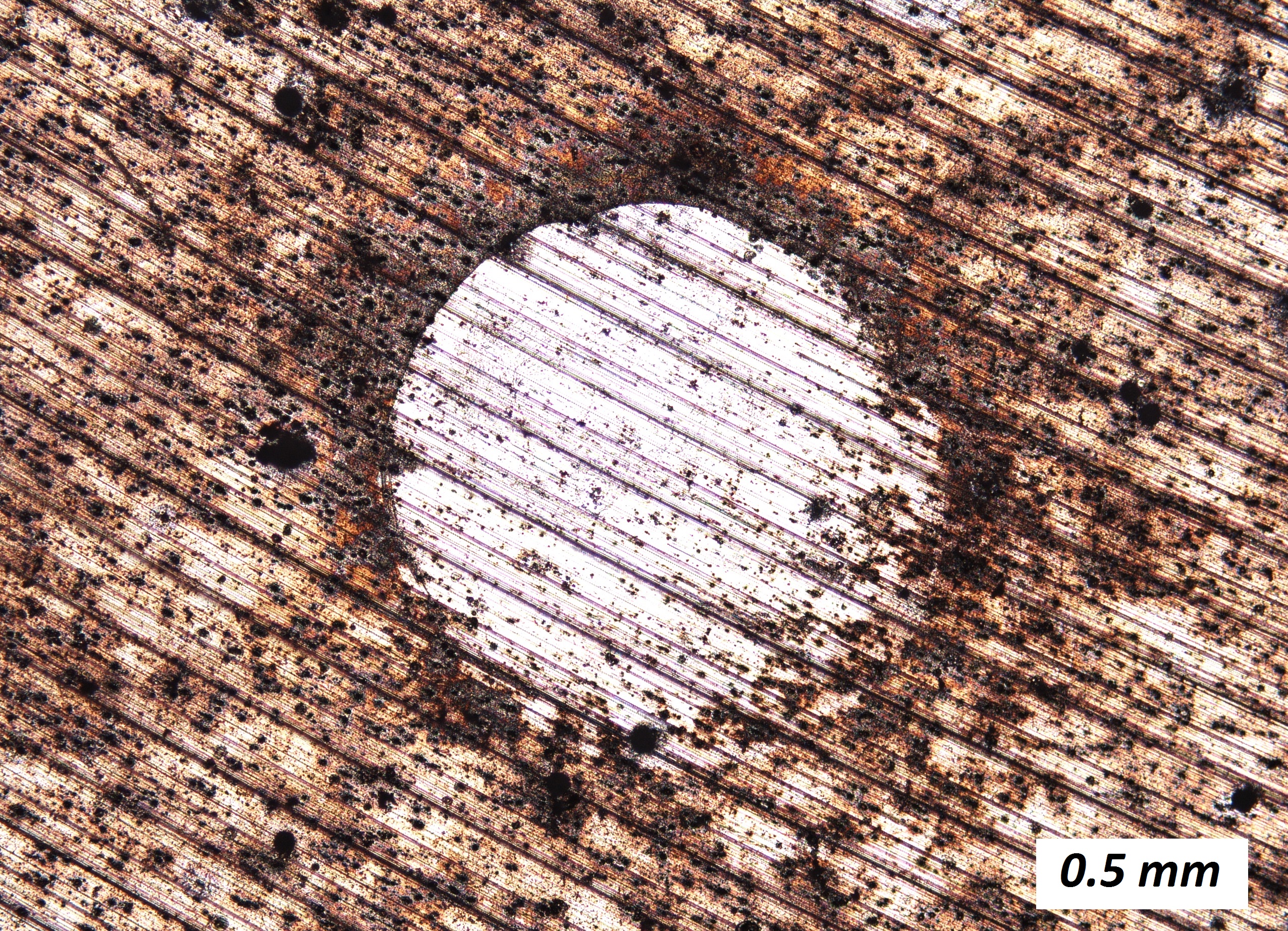|
PZL P.11
The PZL P.11 is a Polish fighter aircraft, designed and produced in the early 1930s by Państwowe Zakłady Lotnicze. Possessing an all-metal structure, metal-covering, and high-mounted gull wing, the type held the distinction of being widely considered the most advanced fighter aircraft in the world at the time of its introduction into service. Work on the PZL P.11 began in the 1930, based on experience with previous aircraft from the family of fighters derived from the PZL P.1. The primary individual responsible for their development was Polish aeronautical engineer Zygmunt Puławski, who has been attributed as having designed many of their innovative features. While most of the world's air forces still operated biplanes in the early 1930s, the P.11, like previous aircraft in the Puławski family, used a high-mounted and aerodynamically clean gull wing that produced less drag and provided the pilot with a superior field of view. In August 1931, the first prototype conducted its ... [...More Info...] [...Related Items...] OR: [Wikipedia] [Google] [Baidu] |
Fighter Aircraft
Fighter aircraft (early on also ''pursuit aircraft'') are military aircraft designed primarily for air-to-air combat. In military conflict, the role of fighter aircraft is to establish air supremacy, air superiority of the battlespace. Domination of the airspace above a battlefield permits bombers and attack aircraft to engage in tactical bombing, tactical and strategic bombing of enemy targets, and helps prevent the enemy from doing the same. The key performance features of a fighter include not only its firepower but also its high speed and maneuverability relative to the target aircraft. The success or failure of a combatant's efforts to gain air superiority hinges on several factors including the skill of its pilots, the tactical soundness of its doctrine for deploying its fighters, and the numbers and performance of those fighters. Many modern fighter aircraft also have secondary capabilities such as ground-attack aircraft, ground attack and some types, such as fighter-b ... [...More Info...] [...Related Items...] OR: [Wikipedia] [Google] [Baidu] |
Gull Wing
The gull wing, also known as Polish wing or Puławski wing, is an aircraft wing configuration with a prominent bend in the wing inner section towards the wing root. Its name is derived from the seabirds which it resembles and from the Polish aircraft designer Zygmunt Puławski who started using this design in his planes. Numerous aircraft have incorporated such wings for a diverse range of purposes. The gull wing was commonly used to improve visibility in a high wing arrangement, because such wing could be thinnest by the fuselage, and in theory should limit pilot's view no more than A-pillars of a windscreen in a car body. Gliders were the first aircraft to feature the gull wing, starting with the Weltensegler in 1921; it was not until the record-breaking Fafnir at the end of that decade did the configuration gain popularity. Beyond becoming popular for the next three decades amongst high-performance gliders, various ground-based aircraft and flying boats also adopted var ... [...More Info...] [...Related Items...] OR: [Wikipedia] [Google] [Baidu] |
Gloster Gauntlet
The Gloster Gauntlet was a single-seat biplane fighter designed and produced by the British aeroplane manufacturer Gloster Aircraft in the 1930s. It was the last fighter to be operated by the Royal Air Force (RAF) to have an open cockpit, and also the penultimate biplane fighter in its service. The Gauntlet had a somewhat lengthy development process, linking back to the S.S.18 prototype of 1929. Extensive modifications, including multiple engine changes and changes to suit varying specifications, resulted in a relatively fast fighter aircraft for the era as well as a heavy armament and favourable manoeuvrability. By mid-1933, the Gauntlet name had been applied to the type and the Air Ministry placed an initial order for 24 aircraft during September of that year. It was procured as a replacement for the Bristol Bulldog, being roughly faster and more heavily armed. In May 1935, 19 Squadron became the first unit to receive the Gauntlet I. An improved model, the Gauntlet II, fea ... [...More Info...] [...Related Items...] OR: [Wikipedia] [Google] [Baidu] |
Romanian Air Force
The Romanian Air Force (RoAF) () is the air force branch of the Romanian Armed Forces. It has an air force headquarters, an operational command, five air bases, a logistics base, an air defense brigade, an air defense regiment and an ISR (Intelligence, surveillance and reconnaissance), ISR brigade. Reserve forces include one air base and two airfields. In 2022, the Romanian Air Force employed 11,700 personnel. The current chief of the Romanian Air Force Staff is Lieutenant general Leonard-Gabriel Baraboi, who succeeded Lieutenant general Viorel Pană on 29 November 2023. The Romanian Air Force was first formed as the Military Aeronautics Service on 1 April 1913, transformed into the Romanian Air Corps in 1915. The Romanian Land Forces, Army-subordinated Air Corps was reorganized as the independent Royal Romanian Air Force on 1 January 1924, then converted to the present-day Air Force in 1949. The Air Force went through a modernization plan in the 1990s and early 2000s, dropping ... [...More Info...] [...Related Items...] OR: [Wikipedia] [Google] [Baidu] |
Bristol Mercury
The Bristol Mercury is a British nine-cylinder, air-cooled, single-row, piston radial engine. Designed by Roy Fedden of the Bristol Aeroplane Company it was used to power both civil and military aircraft of the 1930s and 1940s. Developed from the earlier Bristol Jupiter, Jupiter engine, later variants could produce 800 horsepower (600 kW) from its Engine displacement, capacity of 1,500 cubic inches (25 L) by use of a geared supercharger. Almost 21,000 engines were produced, with a number also being built under license elsewhere in Europe. Several examples remain airworthy, with other preserved examples on public display in aviation museums. Design and development The Mercury was developed by the Bristol Aeroplane Company in 1925 as their Bristol Jupiter was reaching the end of its lifespan. Although the Mercury initially failed to attract much interest, the Air Ministry eventually funded three prototypes and it became another winner for the designer Roy Fedden. With the ... [...More Info...] [...Related Items...] OR: [Wikipedia] [Google] [Baidu] |
Bristol Jupiter
The Bristol Jupiter is a British nine-cylinder single-row piston radial engine that was built by the Bristol Aeroplane Company. Originally designed late in World War I and known as the Cosmos Jupiter, a lengthy series of upgrades and developments turned it into one of the finest engines of its era. The Jupiter was widely used on many aircraft designs during the 1920s and 1930s. Thousands of Jupiters of all versions were produced, both by Bristol and abroad under licence. A turbo-supercharged version of the Jupiter known as the Orion suffered development problems and only a small number were produced. The "Orion" name was later re-used by Bristol for an unrelated turboprop engine. The Bristol Jupiter was licensed by the Soviet Union as the Shvetsov M-22. Design and development The Jupiter was designed during World War I by Roy Fedden of Brazil Straker and later Cosmos Engineering. The first Jupiter was completed by Brazil Straker in 1918 and featured three carburettors, e ... [...More Info...] [...Related Items...] OR: [Wikipedia] [Google] [Baidu] |
Radial Engine
The radial engine is a reciprocating engine, reciprocating type internal combustion engine, internal combustion engine configuration in which the cylinder (engine), cylinders "radiate" outward from a central crankcase like the spokes of a wheel. It resembles a stylized Star polygon, star when viewed from the front, and is called a "star engine" in some other languages. The radial configuration was commonly used for aircraft engines before gas turbine engines became predominant. Engine operation Since the axes of the cylinders are coplanar, the connecting rods cannot all be directly attached to the crankshaft unless mechanically complex forked connecting rods are used, none of which have been successful. Instead, the pistons are connected to the crankshaft with a master-and-articulating-rod assembly. One piston, the uppermost one in the animation, has a master rod with a direct attachment to the crankshaft. The remaining pistons pin their connecting rods' attachments to rings ar ... [...More Info...] [...Related Items...] OR: [Wikipedia] [Google] [Baidu] |
Hispano-Suiza
Hispano-Suiza () is a Spanish automotive company. It was founded in 1904 by Marc Birkigt and as an automobile manufacturer and eventually had several factories in Spain and France that produced luxury cars, aircraft engines, trucks and weapons. In 1923, its French luxury car arm became a semi-autonomous partnership with the Spanish parent company. In 1946, the parent company sold all of its Spanish automotive assets to Enasa, a Spanish state-owned vehicle manufacturer, and the French arm continued as an independent aviation engine and components manufacturer under the Hispano-Suiza name. In 1968, Hispano-Suiza was taken over by the aerospace company Snecma, which is now part of the French Safran, Safran Group. The relaunch of Hispano Suiza Cars has been made by the same founding family (4th generation of the Suqué Mateu Family), the company is part of the Peralada Group (owned as well by the Suqué Mateu family) in 2019 with a fully-electric 1,119 HP hypercar called Hispano-Su ... [...More Info...] [...Related Items...] OR: [Wikipedia] [Google] [Baidu] |
Fabric
Textile is an umbrella term that includes various fiber-based materials, including fibers, yarns, filaments, threads, and different types of fabric. At first, the word "textiles" only referred to woven fabrics. However, weaving is not the only manufacturing method, and many other methods were later developed to form textile structures based on their intended use. Knitting and non-woven are other popular types of fabric manufacturing. In the contemporary world, textiles satisfy the material needs for versatile applications, from simple daily clothing to bulletproof jackets, spacesuits, and doctor's gowns. Textiles are divided into two groups: consumer textiles for domestic purposes and technical textiles. In consumer textiles, aesthetics and comfort are the most important factors, while in technical textiles, functional properties are the priority. The durability of textiles is an important property, with common cotton or blend garments (such as t-shirts) able to ... [...More Info...] [...Related Items...] OR: [Wikipedia] [Google] [Baidu] |
Rivet
A rivet is a permanent mechanical fastener. Before being installed, a rivet consists of a smooth cylinder (geometry), cylindrical shaft with a head on one end. The end opposite the head is called the ''tail''. On installation, the deformed end is called the ''shop head'' or buck-tail. Because there is effectively a head on each end of an installed rivet, it can support Tension (physics), tension loads. However, it is much more capable of supporting Shear force, shear loads (loads perpendicular to the axis of the shaft). Fastenings used in traditional wooden boat building, such as copper nails and clinch bolts, work on the same principle as the rivet but were in use long before the term ''rivet'' was introduced and, where they are remembered, are usually classified among nails and bolts respectively. History Solid rivets are one of the oldest and most reliable types of fasteners, having been found in archeology, archaeological findings dating back to the Bronze Age. Rivet ... [...More Info...] [...Related Items...] OR: [Wikipedia] [Google] [Baidu] |
Duralumin
Duralumin (also called duraluminum, duraluminium, duralum, dural(l)ium, or dural) is a trade name for one of the earliest types of age hardening, age-hardenable aluminium–copper alloys. The term is a combination of ''Düren'' and ''aluminium'' . Its use as a trade name is obsolete. Today the term mainly refers to aluminium-copper alloys, designated as the 2000 series by the international alloy designation system (IADS), as with 2014 aluminium alloy, 2014 and 2024 aluminium alloy, 2024 alloys used in airframe fabrication. Duralumin was developed in 1909 in Germany. Duralumin is known for its strength and hardness, making it suitable for various applications, especially in the aviation and aerospace industry. However, it is susceptible to corrosion, which can be mitigated by using alclad-duralum materials. History Duralumin was developed by the German metallurgist Alfred Wilm at private military-industrial laboratory (Center for Scientific-Technical Research) in Neubabelsberg ... [...More Info...] [...Related Items...] OR: [Wikipedia] [Google] [Baidu] |









